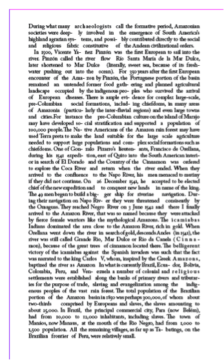
A guest post from our friends — and Global Accessibility Awareness Day 2019 speakers — System Concepts about how to create effective, inclusive content. After all, is content not the crucible of digital experience design?
As we all increasingly source information online, Senior UX Consultant Michelle Parfitt provides some pointers on optimising digital content for users with cognitive impairments
As we spend more of our time online, so that becomes the source of more of the content we consume. From news sites to blogs, information and content heavy websites rely on us as users to read and stick with their content. To achieve this, content needs to be readable (and enjoyable!) for all their readers – including those with different access needs.
Making content easier to read – for everyone
Although there are numerous and diverse groups of people whose needs must be considered, in this article we’re focusing on tips for designing digital content for users with cognitive impairments – such as dyslexia, autism and memory impairments. By designing with this user group in mind, content will become easier to read for everyone!
Include white space in the margins
The longer lines of text are, the harder they are to follow and read, especially for users with dyslexia. Try to provide plenty of white space in your margins to help make column widths narrower, and to reduce clutter on the page, giving it a cleaner look. An average of 80 characters per line is a good rule of thumb.
Don’t justify text

Justified text causes the space between words and characters to vary, and these spaces are generally longer. When gaps between words line up above one another they can create patterns in the text, often referred to as ‘rivers of white’ which can make the text very difficult, if not impossible, for dyslexic people to read.
Additionally, the increased gaps between words can also make reading more difficult for screen magnifier users. Gaps between words are magnified further, making it harder to jump between words and read fluently.
Don’t use non-literal language
Users with autism find non-literal language like metaphors, sarcasm and irony harder to comprehend. So using non-literal language can confuse this user group, and content meaning may not be understood.
Use a sans-serif font
Sans-serif fonts are easier to read, especially by dyslexic readers.
Include summaries
Especially for longer form content, include a summary at the start or end of the piece. Users with memory impairments may struggle to remember the key points raised in the content once they have read it. A summary allows them to quickly remind themselves of the key takeaways. Summaries, if located at the beginning, can help users determine whether they want to read the whole article for more detail. This can be particularly helpful for those with reading difficulties, who may need to invest more time into reading a piece of content
Make content easy to skim
Breaking up content and making it easy to skim read allows readers to get a better sense of what it’s about, and which sections may be most relevant to them. This helps users with dyslexia, who find reading large blocks of text difficult. Content which appears only as large blocks of text can be daunting and off-putting for these users, and ultimately becomes inaccessible to them.
Breaking up content also helps readers with attention disorders who may become easily distracted, as it helps to highlight important pieces within the content.
You can do this using features including headings, bulleted lists, numbered lists, definition lists and indented quotes (using the <blockquote> element). Note that all of these methods to break up content should be implemented using the correct HTML elements, so that they are easily navigable by screen reader users as well.
Write in plain English
Ensure that content is written in clear, plain English. Short, simple, unambiguous phrases are easier to understand than long, complex, ambiguous ones.
Using the active voice is also preferable because it makes clear who does what and is easier to understand (for example, “The user didn’t understand the content” is written in active voice and is clearer than, “The content wasn’t understood by the user”, which is written in passive voice). Users with various cognitive impairments will find it easier to understand content written in plain English.
Include images where appropriate and relevant
Users with more severe cognitive impairments may require content written in extremely short sentences. And they may need images to help understand the meaning of text, or even rely on images alone to understand meaning.
Although it’s not necessary to create an image-only site if your website is only aimed at the general public, it can be beneficial to include relevant, high-quality supplementary images to help convey meaning. Note that irrelevant images can be detrimental though, confusing or distracting users; so only include images that are directly relevant.
This post originally appeared on the System Concepts website.
